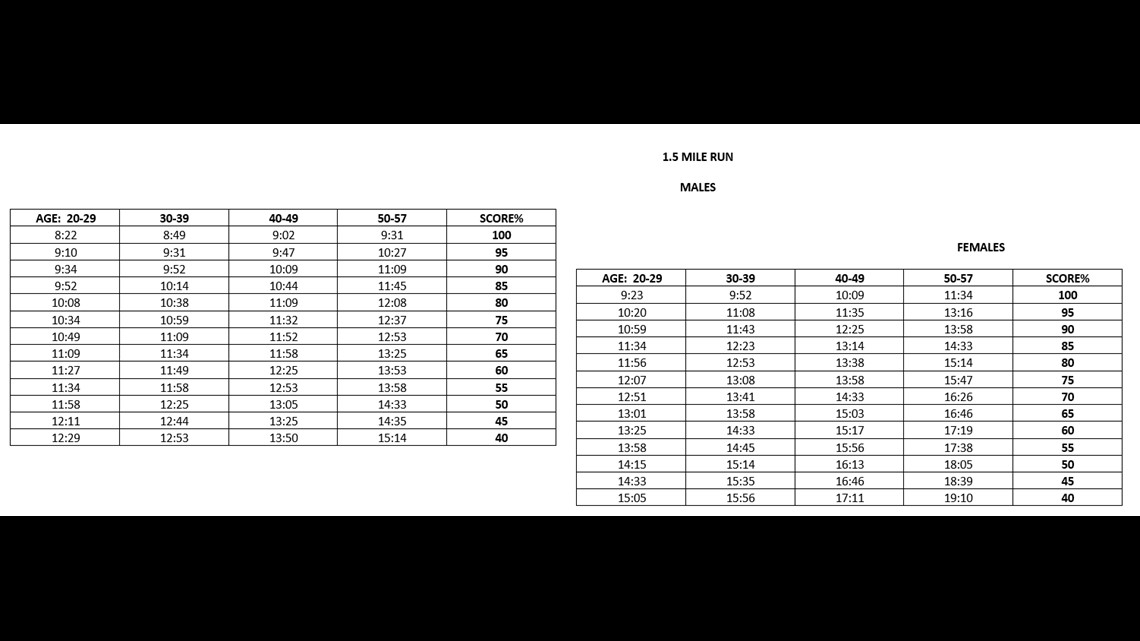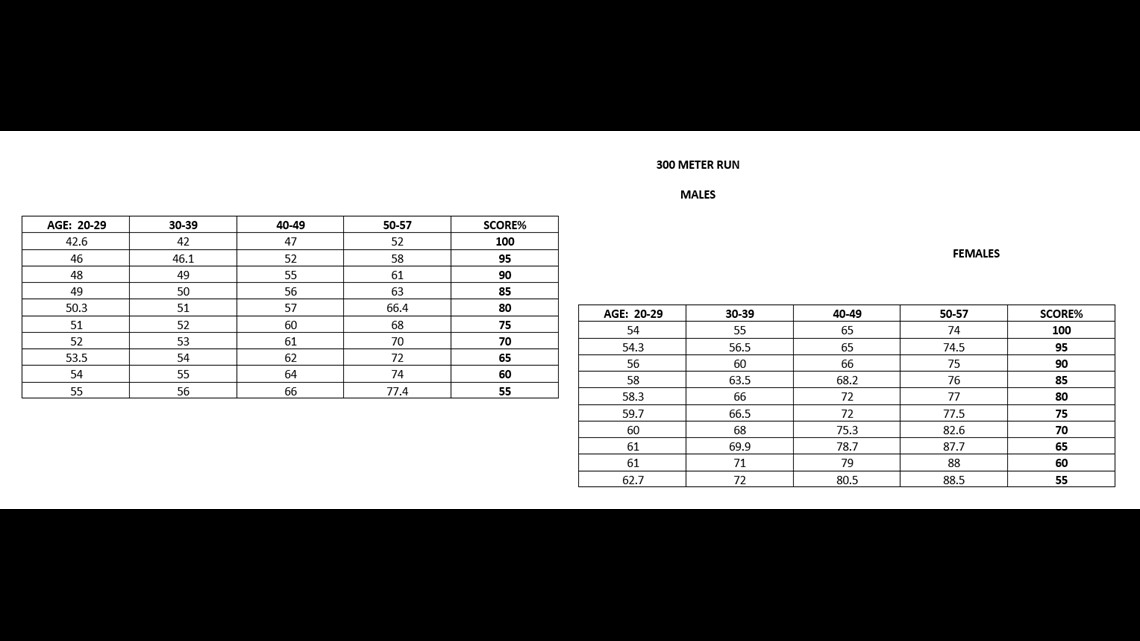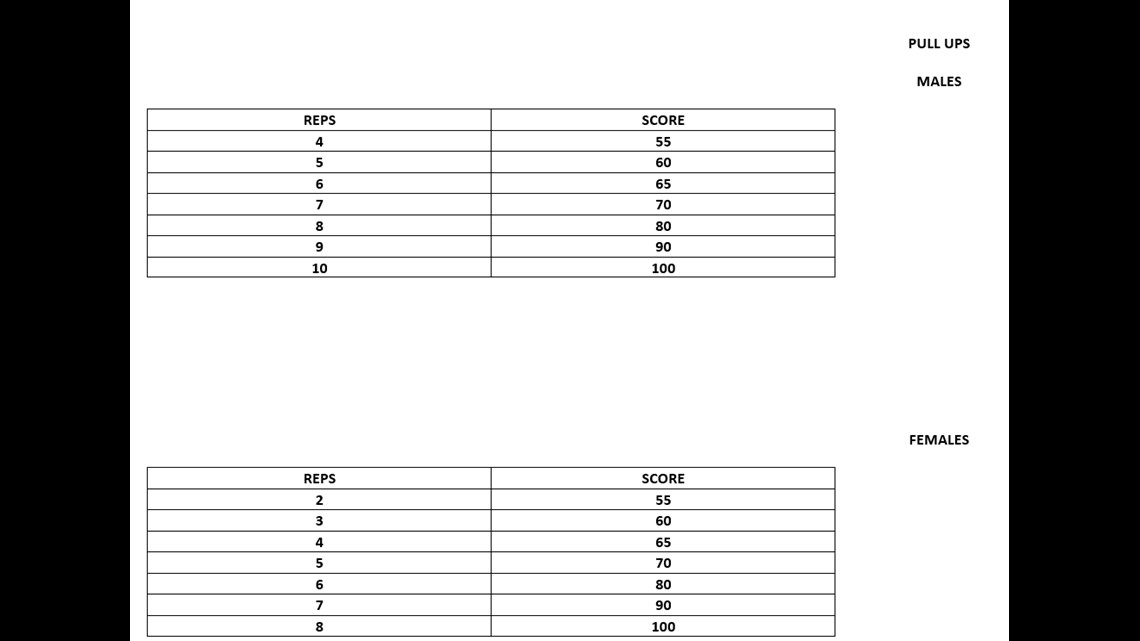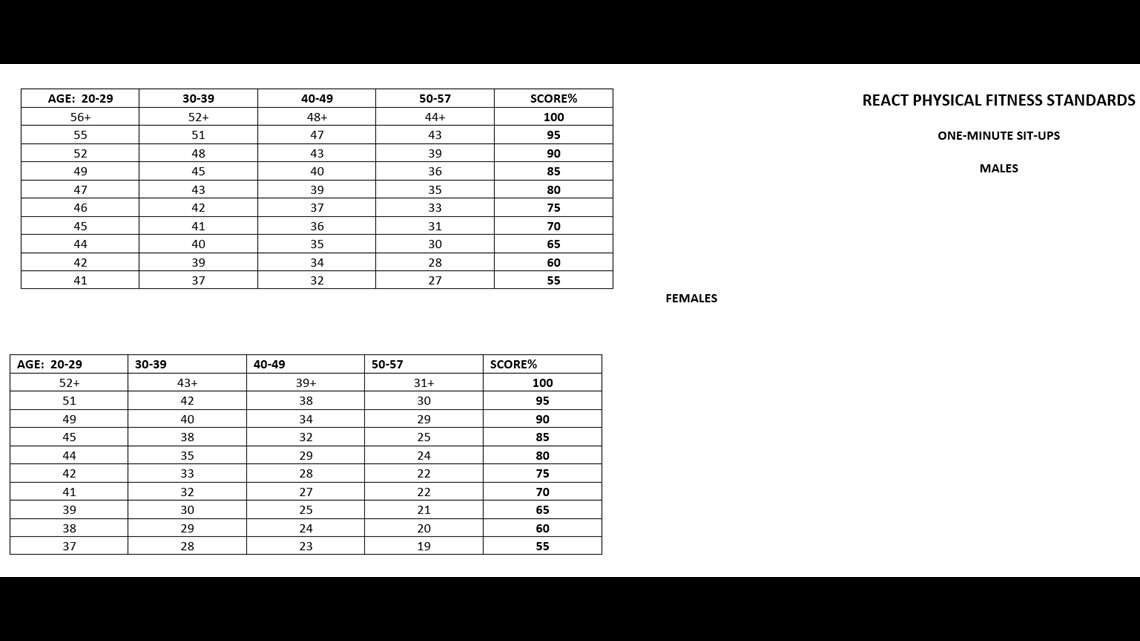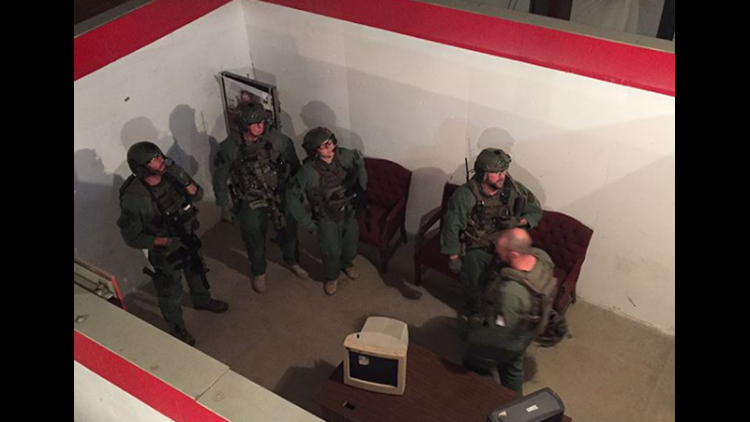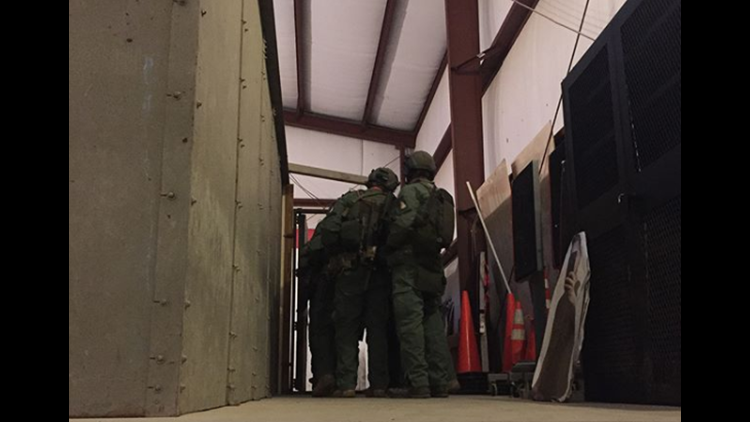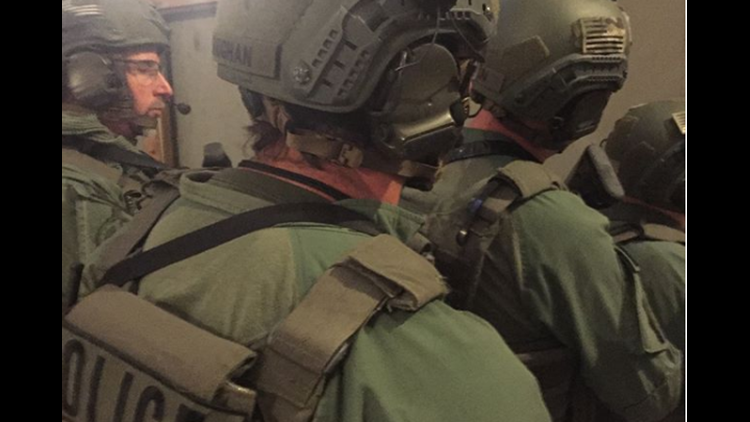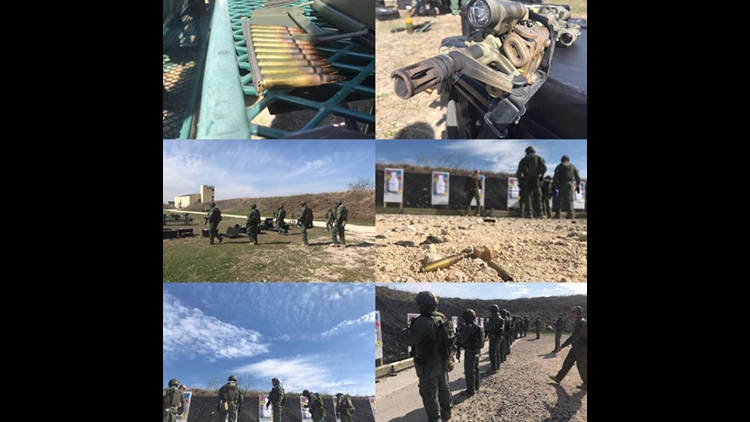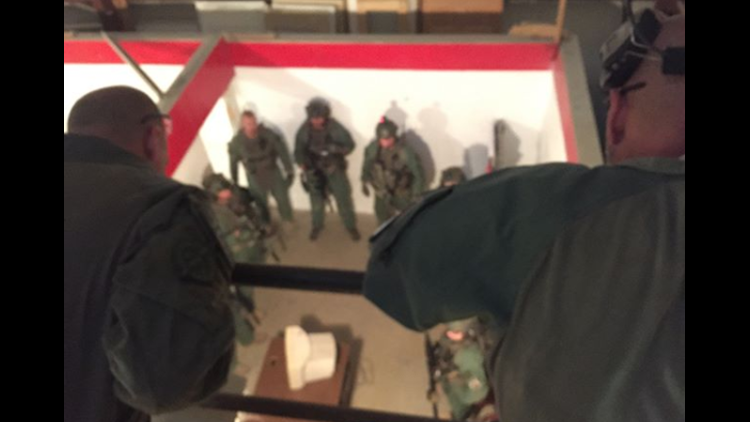AUSTIN, Tx. (WUSA9) — You probably know the Naval Criminal Investigative Service as NCIS - one of the most popular TV shows in the last decade airing right here on WUSA9.
The reality is they're one of the smallest federal law enforcement agencies but they handle thousands of serious cases around the globe. When a member of the navy is a victim or a suspect in a crime, NCIS has jurisdiction.
They’re well-known for investigative savvy. For years, tactical training was not a big part of the plan.
That changed on the day a gunman opened fire at the Washington Navy Yard.
On the morning of September 16, 2013, a deranged contractor named Aaron Alexis walked into building 197 and began firing indiscriminately at anyone he saw.
NCIS Supervisory Special Agent Rick Ryan
In a matter of minutes, Alexis murdered 12 people.
The horror of that day was one reason NCIS built a new tactical team designed to keep agents and the public safer.
We’re the first news team ever let inside the unit to get a closer look.
What we found is a story about survival, hard lessons and new beginnings.
NCIS REACT team tactical training
THE TEAM
On an unseasonably cold day in March, a team of elite NCIS agents woke at dawn outside Austin, Texas.
One by one, they loaded into cars, formed a caravan of SUVs and vans, and drove 15 minutes to a secret and sprawling law enforcement training facility underneath a crushing Texas sky.
They spent five days at this facility, running through repetitive and exhausting drills.
This is REACT, the Regional Enforcement Action Capabilities Team, where the prestige is high and the pressure even higher.
Trainings happen at least four times a year. Each drill is a try-out. Agents who don’t succeed risk getting cut.
On day one, gunfire from handguns and rifles rang out almost non-stop for the first few hours. Range practice is essential.
NCIS Special Agent Mark Platt
Commander Gerry Arena helped build the team.
“They’re responsible for every round that comes out of that gun and that’s why we focus so much on accuracy,” he said.
Agents spent the afternoon running sprints in 60 pounds of gear, blowing out tires, smashing windows, and conducting sniper practice.
Agents spent days spreading through mock buildings, shooting real rifle rounds at changing targets.
By the end of each day, gunpowder lines your nostrils, floods your mouth and hangs in the back of your throat.
For most of the guys on the team, this isn't even their full-time job with NCIS. It’s an extracurricular for the extra talented.
There are just 43 agents on the team. NCIS has roughly 1059 agents total.
“The standards are pretty high, and they're unwavering,” Arena said. “We cannot adjust standards to increase numbers.”
NCIS Special Agent Dale Holder
BORN AFTER BLOODSHED
The idea grew out of lessons learned at the Washington Navy Yard.
In 2013 a gunman opened fire there, killing 12 people, leaving behind the largest crime scene ever in Washington D.C.
As 911 calls poured in that morning, more than one hundred officers and federal agents from a long list of agencies descended into chaos.
They spent about an hour searching for a deranged contractor named Aaron Alexis.
The task was ominous. Alexis was slipping through hallways in a building with five floors, 600,000 square feet and cubicles laid out like a maze.
NCIS agents working onsite, rushed toward the gunfire, risking their own lives to take on Alexis.
NCIS Special Agent David Gladish
As a regular practice, agents carried only handguns -not the heavy-duty weapons seen hanging from other federal law enforcement agents who responded.
In one instance, NCIS agents exchanged gunfire with Alexis. A second time, Alexis shot at a group of NCIS agents and MPD officers, striking a MPD officer in the legs.
NCIS agents dragged the downed-officer to safety, saving his life.
Among the heroism, NCIS learned tough lessons about its own preparedness.
“One of the agents that was there who first encountered Aaron Alexis and actually exchanged gunfire with him had to run out to get his extra spare magazines,”’ said NCIS Director Andrew Traver.
“There's a video that we watched during the after action and one of the agents is helping clear that huge cube farm,” he said. “He actually walks twice right by the spot where Alexis is hiding in a cube. And he realized as he walked back and forth that at either time Alexis could have popped up and just shot him. And he wouldn't have even seen it coming.”’
After speaking with agents who responded, Director Traver realized NCIS was unprepared for unpredictable violence. NCIS agents had no grab-and-go tactical gear and agency-wide tactical training ended once agents left the academy.
“So part of it was not having the right equipment, not having the right training, and not having the mindset,” Traver said.
In 2014, Traver announced the launch of a new tactical team. NCIS insists the Washington Navy Yard shooting wasn’t the only reason for the overhaul.
A NEW BEGINNING
When the announcement about a new tactical team popped up in Agent Eric Rahlf’s inbox, he was stunned.
“My first reaction was of disbelief because it was a long time coming and so I started making phone calls to some of the guys,” Rahlf said. “I was like ‘is this a legit thing? Are we really doing this?’’
Rahlf says before REACT, NCIS agents used local police or ad hoc teams of field agents to carry out dangerous take downs and searches.
“I think a lot of the times we've gotten very lucky that nothing happened,” Rahlf said.
Rahlf was one of the few agents with a good enough shot and in good enough shape to make the team.
The physical test and firearms qualifications exceed NCIS standards.
NCIS Special Agent Rob Smith
Anyone hoping to join REACT must shoot a 90% or better on an agency qualification course just to be considered for the team. Once agents enter the REACT training, they must shoot 93% or better. Agents must shoot on the move and switch between firearms rapidly.
Agents who can’t make it goes home.
The physical test is demanding. Agents are asked to perform a series of pull-ups, one minute of sit-ups, one minute of pushups, a 300-meter sprint and a 1.5 mile run under a set time.
Rahlf is now a full-time instructor with REACT, taking the culture of his agency into his own hands.
“It’s not done halfway,” he said. “It’s always done 100 percent, all the time that’s it. There’s just no other way to do it.”
The REACT mission is two-fold: carry out the agency's most dangerous takedowns and searches, and train other NCIS field agents for critical incidents like an active shooter.
Arena pointed out the team is so new he can’t describe any cases REACT has worked. Internal policies prohibit discussion of cases that haven’t finished.
THE FUTURE
It’s impossible to say if any amount of training or gear would have changed what happened at the Washington Navy Yard.
Though REACT was born after bloodshed, Commander Arena believes it will save lives in the future.
NCIS Special Agent Dave Vaughan
“I think they're better prepared today than they were three and a half years ago, and I think they'll be better prepared three and half years from now than they are today,” Arena said.
He added the team is still in its infancy. NCIS would like to broaden the team to around 50 agents spread across three divisions nationwide.
PHYSICAL FITNESS REQUIREMENTS:
The following was provided by NCIS:
The physical demands of REACT require operators to be in superior physical condition. Physical fitness is a critical evaluation element in determining competitiveness for the REACT Program. To make sure candidates are fully prepared to meet their responsibilities as REACT Operators, candidates must pass a Physical Fitness Test. The test is modeled on standards for gender and age developed by the Cooper Institute, a nonprofit organization established in 1970, with a focus on fitness.
The test consists of five mandatory events that are administered in the following order:
- Pull-ups (55%)
- Sit-ups in one minute (55%)
- Push-ups in one minute (55%)
- 300 meter sprint (55%)
- 1.5 mile run (40%)
**The 5 events will be completed in order, with a 5 minute break between events**
The candidate must score 55% or above in each of the following categories to continue the physical fitness test: Pull Ups; One Minute Sit-Ups; One Minute Push Ups, and the 300 meter sprint. A score below 55% will dismiss the candidate from the current applicant process. A score of 40% or above is required to pass the 1.5 mile run. A score of less than 40% in the 1.5 mile run will dismiss the candidate from the current applicant process. Once the test is concluded all five scores will be averaged and a combined score of 70% is required to pass the physical fitness test.
A full effort is recommended for competitive selection. The physical fitness test is considered one-third of the REACT standards (firearm qualifications, physical fitness test and panel interview) and equally weighted 33.33%.
Failure to pass the minimum standards will automatically dismiss the applicant from REACT candidate consideration.
Event Procedures
- Pull-ups – Proper technique will be demonstrated. Dead hang, palms facing away, no kipping, no knees above the waist, chin must break the plane of the bar.
- 1 minute sit-ups – Proper technique will be demonstrated. Hands folded across the chest, arms touching the knees at the up position, feet anchored. The lower back must completely touch the floor in the down position.
- 1 minute push-ups – Proper technique will be demonstrated. Participant will lower their body until their upper arms are at least parallel to the floor then pushes up again. The instructor must be able to see both elbows across the top of the back in the down position. The back must be kept straight, and in each extension up, the elbows should lock. Resting in the up position (only) is allowed. You cannot take a knee.
- 300m sprint – as described.
- 1.5 mile run – as described.
Event Definitions: Why These Events Are Used.
Pull-up - This test primarily measures the muscular strength/endurance of the biceps and latissimus dorsi muscle group and displays grip strength. Because special response team activities often involve surmounting barriers or climbing into and over barriers or windows, climbing ladders, and carrying equipment such as breaching rams, the pronated grip pull up is a valid measure of one of the essential tasks.
Push-up (one minute) - The push-up measures the muscular strength/endurance of the upper body muscles in the shoulders, chest, and back of the upper arms (the triceps) used in high intensity self defense and arrest simulation training. This is important for use of force involving pushing motion breaking one’s fall to the ground, use of the baton, etc.
Sit-up (one minute) - This test measures the muscular strength/endurance of the core muscle groups, which are used in self-defense and high intensity arrest-simulation training. These muscles are important for performing tasks that involve the use of force and it helps maintain good posture and minimize lower back problems. Special response team operators often wear heavy level III ballistic vests and are required to carry additional equipment on their person while maintaining mobility.
300 Meter Run – The 300 meter run measures anaerobic power (short duration, high intensity activities). This test measures anaerobic capacity used in high intensity baton and defensive tactics training, and is important for performing short intense bursts of effort such as foot pursuits, rescues and use of force situations.
1.5 Mile Run - The 1.5 mile run is used to measure the heart and vascular system capability to transport oxygen, and to assess your cardio-respiratory endurance (or aerobic capacity) and your leg muscles’ endurance. This is important for performing tasks involving stamina and endurance and for minimizing the risk of cardiovascular health problems.

